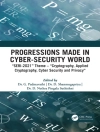Human knowledge is primarily the product of experiences acquired through interactions of our senses with our surroundings. Of all the senses, vision is the one relied on most heavily by most people for sensory input about the environment. Visual interactions can be divided into three processes: (1) de- tection of visual information; (2) recognition of the "external source" of the information; and (3) interpretation of the significance of the information. These processes usually occur sequentially, although there is considerable interdependence among them. With our strong dependence on the processes of visual interactions, we might assume that they are well characterized and understood. Nothing could be further from the truth. Human vision remains an engima, in spite of specu- lations by philosophers for centuries, and, more recently, of attention from physicists and cognitive and experimental psychologists. How we see, and how we know what we see, remains an unsolved mystery that challenges some of the most creative scientists and cognitive specialists.
William Thomson & Peter N.T. Wells
Perception of Visual Information [PDF ebook]
Perception of Visual Information [PDF ebook]
Cumpărați această carte electronică și primiți încă 1 GRATUIT!
Limba Engleză ● Format PDF ● ISBN 9781475767698 ● Editor William Thomson & Peter N.T. Wells ● Editura Springer New York ● Publicat 2013 ● Descărcabil 3 ori ● Valută EUR ● ID 4617624 ● Protecție împotriva copiilor Adobe DRM
Necesită un cititor de ebook capabil de DRM











